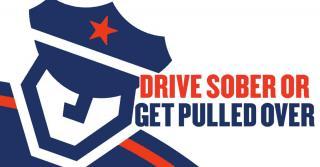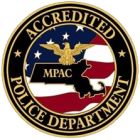“Drive Sober or Get Pulled Over” Campaign

Contact:
Lieutenant Michael Carbone
(781) 934-5656 x1143
For immediate release - Duxbury, MA - 8/8/2018
The Duxbury Police Department will increase impaired driving patrols on local roads with grant funds from the Highway Safety Division of the Executive Office of Public Safety and Security (EOPSS). Duxbury Police will join local departments across the state as well as the Massachusetts State Police in the national Drive Sober or Get Pulled Over enforcement mobilization and public information campaign.
This year’s campaign will urge drivers drinking alcohol or using marijuana and other drugs to plan ahead and designate a sober driver, use a ride-share service or take public transportation.
“Impaired drivers create a dangerous situation for everyone around them, threatening the destruction of lives and entire families,” said Chief Clancy. “This grant will help increase our efforts during the busy summer travel season to keep our roads free of impaired drivers and avoid the tragedy they wreak.”
“Getting behind the wheel after drinking alcohol, using marijuana or both is one of the most dangerous things drivers can do,” said Jeff Larason, Director of the Highway Safety Division. “A little planning can save your life or someone else’s. Regret or remorse won’t bring someone back.”
To view the Highway Safety Division’s (HSD) “Drive Sober or Get Pulled Over” TV spots, or for more information about the HSD’s public information campaign, go to www.mass.gov/DriveSober.
Massachusetts Data:
- Marijuana or marijuana-type drugs were the most prevalent types of drugs found in people killed in crashes from 2011 to 2016.
- From 2015 to 2016, alcohol impaired driving fatalities increased 9 percent (109 to 119).
- From 2011-2015, 82 percent of impaired drivers in fatal crashes were men.
- From 2011-2015, 45 percent of all alcohol-related driver fatalities were ages 21 to 34.
National Data from the National Highway Traffic Safety Administration:
- Approximately one-third of all traffic crash fatalities in the United States involve drunk drivers. On average, more than 10,000 people have died each year (2012- 2016) in drunk-driving crashes. To put it in perspective, that’s equal to about 20 jumbo jets crashing, with no survivors.
- In 2016, almost one in five children (14 and younger) killed in traffic crashes were killed in drunk-driving crashes. Fifty-four percent of the time, it was the child’s own driver who was drunk.
- Drugs were present in 43 percent of the fatally-injured drivers with a known test result in 2015, more frequently than alcohol was present.
- NHTSA’s 2013–2014 roadside survey found drugs in 22 percent of all drivers both on weekend nights and on weekdays.
- Tetrahydrocannabinol (THC)—the chemical responsible for most of marijuana’s psychological effects—slows reaction times, impairs cognitive performance, and makes it more difficult for drivers to keep a steady position in their lane.
- Mixing alcohol and marijuana may dramatically produce effects greater than either drug on its own.
Note to the Media: Please ask law enforcement representatives about the use of seat belts in all crashes being reported on, and include in any coverage. Distracted or impaired crashes are not “accidents”. The Highway Safety Division of the Executive Office of Public Safety and Security (EOPSS) urges media to follow the AP Stylebook, which suggests avoiding the word “accident” in reference to negligent, drunk or drugged crashes.


